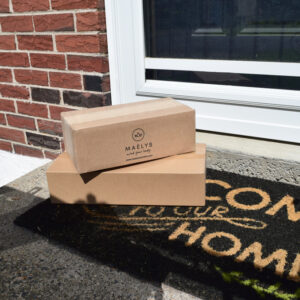









Understanding recycling numbers can sometimes feel like deciphering a secret code. However, these numbers, inside the familiar triangular arrows on plastic items hold the key to sustainable living and environmental conservation. They are not just symbols; they represent the recycling codes that categorize plastic based on its material and recyclability. With the increasing awareness of plastic’s impact on the environment, knowing what these recycling numbers mean is essential for individuals and businesses alike aiming for environmental responsibility.
Recycling Number 1: PET
First, PET, or Polyethylene Terephthalate, is a standout in the world of plastics due to its extensive use and high recyclability. This plastic material with the recycling symbol #1, is predominantly used for packaging a wide array of consumables. Including soft drinks, water, and various food items.
Common Examples
We most commonly recognize PET in the form of beverage bottles for water and soft drinks. PET is common to use as containers for peanut butter, salad dressings, and vegetable oils. Its qualities like lightweight, clarity, and strength make it an ideal material for these applications. Moreover, many brands use PET in packaging products like mouthwash bottles and even in non-food items such as certain medical devices and personal protective equipment (PPE). Further showcasing its versatility.
Is it Recyclable?
PET is recyclable and is the most recycled plastic globally. In Europe, for instance, around 58% of PET bottles are put through the recycling process. The process starts by collecting PET products and compressing them into bales. These bales are then taken to recycling facilities where they sort, clean and process the plastic into flakes. These flakes transform back into PET products or other items like rPET fabric for clothing. Most importantly, this proves the material’s capability for multiple life cycles.
Impact on Environment
PET’s environmental impact is much lower than other plastics. Making it an eco-friendly option. Manufacturing PET requires less energy, which in turn reduces carbon emissions. Furthermore, because PET bottles have become lighter over the years—40% lighter since 2000—the transportation of PET packaging products uses less fuel. Contributing to a decrease in overall carbon footprints. The high rate of PET recyclability also means less waste ends up in landfills. Therefore, making it a more sustainable packaging option. However, it’s crucial to ensure we dispose of and recycle PET products correctly to maximize their recyclability and minimize environmental harm.
In essence, choosing the right PET packaging and participating in recycling practices are simple yet impactful ways to contribute to environmental sustainability.
Recycling Number 2: HDPE
Next, HDPE, or High-Density Polyethylene, carries the recycling code of 2 and is known for its robustness and versatility. Brands frequently use this type of plastic to manufacture items that require durability and resistance to moisture and chemicals; such as containers, detergent bottles, plastic shopping bags, and more sturdy items like piping and crates.
Common Examples
HDPE’s strength and lightweight nature make it ideal for everyday items. Consumers commonly encounter HDPE in plastic shopping bags, shampoo bottles, and tupperware. Its resistance to corrosive substances makes HDPE ideal for storing household cleaners and industrial chemicals. Beyond containers, we utilize HDPE in heavier-duty applications such as wood-effect decking and outdoor furniture, highlighting its wide-ranging utility.
Is it Recyclable?
Indeed, HDPE is not only recyclable but also one of the most popular plastics to recycle due to its ease of processing. The recycling process for HDPE involves several key stages. Initially, it starts with the collection and sorting of HDPE materials. These materials are then thoroughly cleaned to remove any contaminants and subsequently shredded into smaller pieces. The materials undergo a high-temperature melting process that transforms them into new, usable plastic granules. Remarkably, facilities can easily recycle HDPE multiple times, significantly extending its lifecycle and reducing environmental waste.
Impact on Environment
While HDPE is a petroleum-based product, its recycling capabilities contributes positively to environmental conservation. Recycling HDPE is essential for reducing plastic waste in landfills and oceans, which helps protect both marine and terrestrial life from potential harm. What’s more, the production and recycling of HDPE utilize less energy when comparing to other plastics; which helps in lowering carbon emissions. However, it is crucial to manage HDPE waste properly to maximize its recyclability and minimize its environmental footprint.
Recycling Number 4: LDPE
Then, there’s Low-Density Polyethylene (LDPE). Easily identifiable by the recycling symbol #4, LDPE is common in products that require flexibility and durability. It’s found in everyday items such as thinner plastic shopping bags, shrink wrap, and squeezable condiment bottles. Despite its widespread use, the recyclability of LDPE can be complex.
Common Examples
Brands use LDPE in various products such as grocery bags, bread packaging, agricultural films, bubble wrap, food storage containers, and coatings for paper milk cartons. This versatility, however, presents challenges in recycling processes.
Is it Recyclable?
While LDPE is technically recyclable, the process isn’t straightforward. Most curbside recycling programs do not accept LDPE due to its lightweight nature and the large volume required to make recycling economically viable. Notably, items made from LDPE often tangle in recycling machinery. Causing operational disruptions and delays. However, some facilities specialize in LDPE recycling, and certain stores offer collection bins for products like plastic shopping bags.
Impact on Environment
The environmental impact of LDPE is significant, primarily because it comes from non-renewable fossil fuels. This process leads to carbon emissions during production, exacerbating climate change and depleting natural resources. Moreover, improper disposal of LDPE can take hundreds of years to decompose, posing risks to wildlife and ecosystems.
Recycling Number 6: PS
Last, Polystyrene (PS), recognized by the recycling symbol #6, is prevalent in various disposable products such as coffee cups, packing peanuts, and food containers. Despite its widespread use, PS is notoriously challenging to recycle due to its lightweight yet bulky nature.
Common Examples
PS is commonly found in everyday items like Styrofoam cups, food packaging, and protective shipping materials. Its versatility makes it a popular choice for manufacturers, but this same property complicates the recycling process.
Is it Recyclable?
While PS is technically recyclable the reality is less straightforward. Most curbside recycling programs do not accept PS because it is difficult to handle and offers little economic return from recycling efforts. Special facilities that can process PS are limited, and the material needs to be clean and free of contaminants. Which is often not the case with food containers and cups.
Recycling Numbers and Their Impact on the Environment
The environmental impact of PS (polystyrene) is significant; it comes from non-renewable fossil fuels and can take hundreds of years to degrade. This long degradation period means that polystyrene products contribute to persistent environmental pollution, affecting both land and marine ecosystems.
Mismanaging PS waste contributes to pollution and poses serious risks to wildlife and ecosystems, particularly in marine environments. Efforts to recycle PS, though not widespread, can mitigate some of these environmental issues, but the broader adoption of recycling programs and alternative materials is critical for reducing the footprint of PS products.
Recycling Number 7: OTHER
Finally, recycling Number 7, often labeled as OTHER, encompasses a diverse range of plastics that do not fit into the first six recycling categories. This category includes plastics made from different resins or combinations of materials that challenge traditional recycling processes.
Common Examples
You’ll find #7 plastics in a variety of products such as three- and five-gallon water bottles, certain food containers, sunglasses, DVDs, and even electronics like iPods and computer cases. These items frequently contain bioplastics, which differ from the more commonly recyclable plastics.
Is it Recyclable?
Ultimately, recycling #7 plastics can be difficult. While rigid containers like bottles and jars may sometimes be recyclable under specific programs, many items under recycle symbol #7 are not traditionally recyclable. This includes flexible plastic packaging and items made from composite or mix materials. For accurate disposal methods, we recommend checking with local recycling guidelines or specialty recycling centers.
Impact on Environment
The environmental impact of #7 plastics is notable due to their complex compositions and associated chemicals, such as BPA and BPS, which are linked to numerous health and environmental issues. Although these plastics are challenging to recycle, reducing the use of #7 plastics and opting for alternatives can significantly mitigate their environmental footprint.
Final Thoughts
In conclusion, embracing innovative packaging solutions and the meaning of all recycling numbers plays a pivotal role in enhancing sustainability efforts across industries. Prime Line Packaging stands at the forefront of custom-designed, sustainable packaging solutions. Embodying over 60 years of expertise in creating impactful packaging that marries functionality with environmental consciousness. Our dedication to crafting custom packaging resonates with the needs of the modern consumer and industry demands, offering an array of options to elevate brands while underscoring the importance of sustainability.



